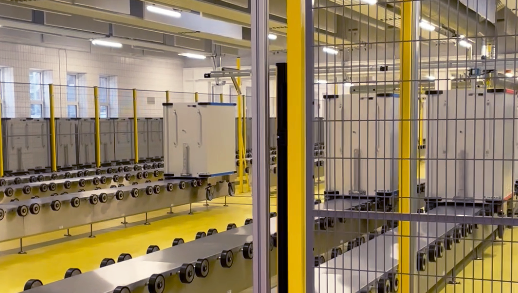Automation solutions are always tailored to each specific hospital, but ergonomics are inevitably improved.
Can robots, automation solutions, and ergonomics be combined? If you ask us, it is unavoidable to improve ergonomics and the working environment when you invest in robots and automation.
You are likely considering an automation solution for your hospital because you want to streamline some work processes. But what if we told you that improved ergonomics come as a bonus?
Of course, it’s not the robots and automation themselves that are ergonomic or perform work ergonomically. Ergonomics are improved because robots take over tasks that can otherwise be potentially non-ergonomic, or because they help perform tasks in ways that are less physically demanding.
All processes and solutions are, of course, tailored to the specific hospital and its needs, but the benefits remain the same.
Here is how some automation solutions improve ergonomics:
Adjustable workstations
You are probably familiar with common manually adjustable height desks. But it is possible to get workstations where both the height, brightness, and possibly other parameters adjust when an employee logs in with their ID. This way, you can ensure that the height is always suitable and that the brightness is sufficient and angled correctly.
Wheel conveyors for case cart transport
Case carts with goods, supplies, bed linens, and other items can be heavy to push. On routes that the case carts frequently travel, wheel conveyors can be installed to handle the transport back and forth. If there are multiple wheel conveyors, they can be programmed to prioritize carts and place them in the front if needed.
Robots that open and unload case carts
Opening and unloading case carts of materials is a necessary job, but it can also involve non-ergonomic positions such as arms above shoulder height or body twisting when opening and closing doors. The entire process can instead be managed by one or more robots that open the cart doors, possibly scan the contents, and unload the case cart. Wheel conveyors can handle the transport to and from the robot.
Robots that load case carts
Just as a robot can unload a case cart, it can also load the case cart with materials further along in the process. This could be trays with clean dishes in the kitchen or containers with sterile surgical instruments in the Sterile Processing Department.
Mobile robots for interdepartmental transport
While wheel conveyors are often used for transport within a department – and for larger case carts – mobile robots can be used for transport between departments or smaller items within a department. This could be, for example, washing racks in the Sterile Processing Department or delivery of goods from the goods reception to the respective departments. If needed, mobile robots can communicate with a system that calls elevators for them, allowing them to move between floors.
Sign up for our newsletter
How can you automate a hospital? What have your colleagues done, and what options are available? Sign up for our hospital newsletter to get plenty of new knowledge and inspiration.
Contact us
Address
Datavej 15
5220 Odense SØ
Denmark
Contact
+ 45 65 95 82 62
gibotech@gibotech.dk
Opening hours
Monday – Thursday: 7.00−−15.30
Friday: 7.00 – 13.00
